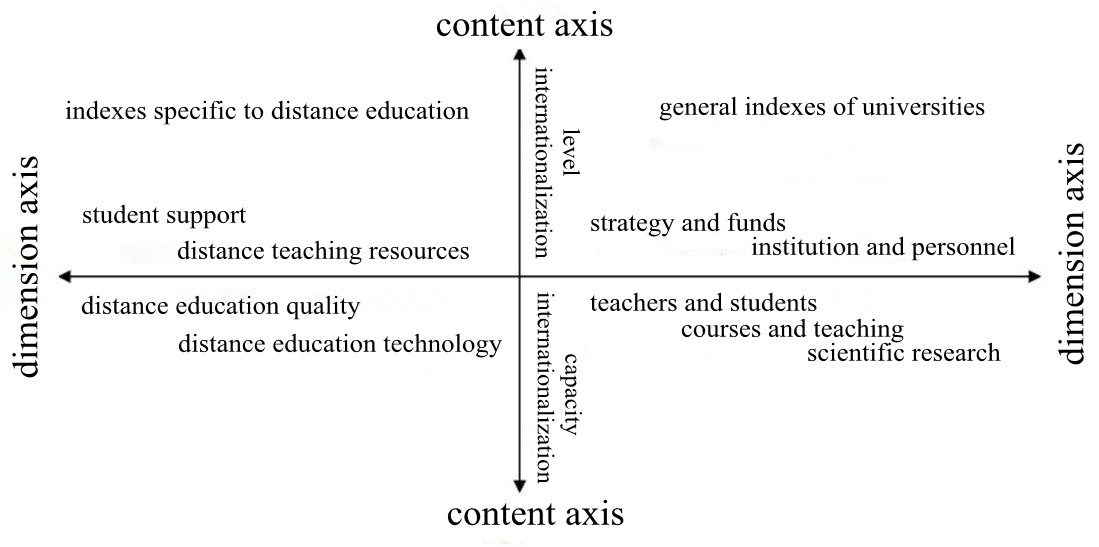Of course, not giving a uniform, fixed weight to each index does not mean that each index has no quantitative monitoring data. On the contrary, requirements for quantitative data are becoming broader and more precise as university internationalization becomes increasingly complex and comprehensive. Data are monitored and collected by integrating qualitative and quantitative methods in accordance with the specific content and evaluation guide for each index, so that each index is furnished with both qualitative description and data support. In this way, the level, capacity and quality of IOU can be reflected and evaluated in a more scientific and credible way. To this end, the concept of an "internationalization diversity" index can also be introduced. For example, for the foreign student index, we should not only monitor the number of foreign students, but also the number of nationalities represented. The diversity index would be computed by dividing the number of foreign students by the number of nationalities. We believe that a university with a modest number of foreign students may be considered highly internationalized if those students are widely distributed among a large number of nationalities. The reason is that the number of nationalities can directly reflect the university's attractiveness to students of different countries.
2.3 Each index is designed through a process based on different goals of use and individual choices
We hold that different internationalization indexes should have different designs and somewhat different uses due to the influence of such factors as different research goals, different research background and different researchers. The process of designing an internationalization index system is very subjective as each participant has a different perspective. There is no right or wrong for different index systems, neither is there a single index system that is universally applicable. Schools with different orientations and different development backgrounds will have different objectives for internationalization and different corresponding indexes. After researching domestic and international internationalization index projects, a total of 75 first level indexes were identified (not all of them are listed here). Analysis of the 75 indexes revealed that they could be attributed to the following five dimensions: strategy and funds, institution and personnel, teachers and students, courses and teaching, and scientific research. Therefore, the study uses these five dimensions as general indexes for university internationalization.
2.4 The index framework should be grounded in the general indexes of university internationalization while embodying indexes specific to distance education
The open university is an institution of higher education dominated by distance education. Therefore, when constructing an IOU index framework, one can select different dimensions from among the two categories of general indexes of universities and indexes specific to distance education (see Figure 2 below). This study constructed an index framework with 9 dimensions. The general indexes of universities occupy five of the dimensions as described above, namely: strategy and funds, institution and personnel, teachers and students, courses and teaching, and scientific research. Based on Desmond Keegan’s classic definition of distance education in his book Theoretical principles of distance education[10], DING Xingfu’s definition of “distance education in a narrow sense (school distance education or institution distance education)”in his book Distance Education (2nd edition)[11], and other scholars’ definitions of distance education, an additional four dimensions specific to distance education were chosen, namely: distance teaching resources, student support, distance education quality and distance education technology. As stated above, in order to advance university internationalization, the level and capacity of internationalization must be boosted in parallel. As such, our design of the index framework includes monitoring indexes and data for both level and capacity of internationalization for each index dimension. The framework can also be regarded as an open and self-defined design tool for internationalization indexes with both qualitative and quantitative assessment. With the help of this index tool, different researchers and open universities can design their own index system in line with their orientation, foundation, development objectives and goals of use, and use it for self-assessment or external assessment.

Figure 2 Sketch Map of IOU Index Framework